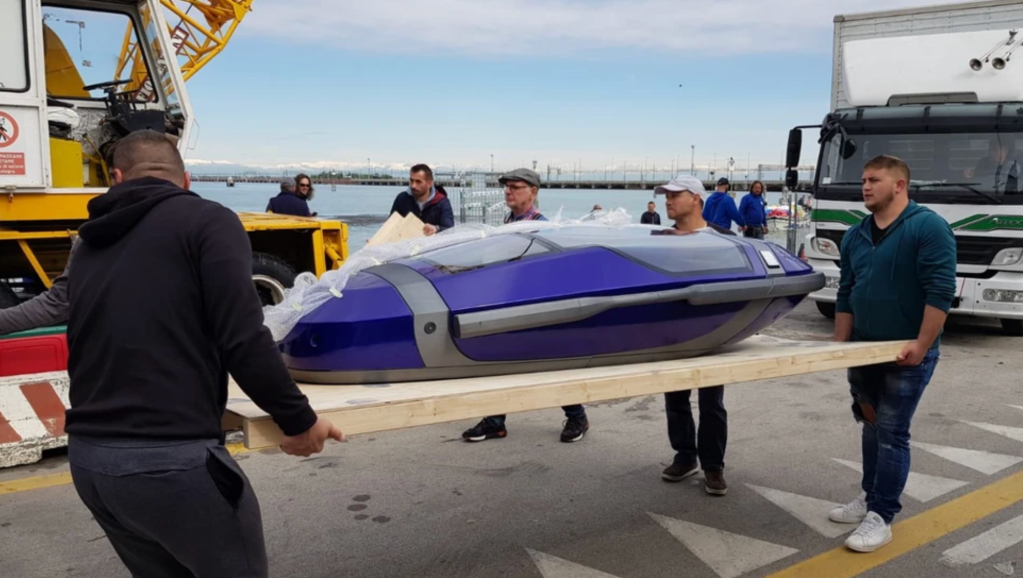The flying drone extends its robotic arm and squirts out 3D-printed sticky foam. Image: New Scientist/YouTube
We’ve already got robots that can 3D-print things and robots that can fly, so it was only a matter of time until someone merged the two technologies to create a flying, 3D-printing robot.
Not 3D-printed, mind you—though we’ve got those too. This new handy machine combines a 3D printer with an autonomous quadcopter to boost the potential capabilities of both, as New Scientist reported today.
Videos by VICE
Tiny, autonomous, swarming UAVs are the new hot thing in robotics; by being able to swoop into dangerous situations where humans dare not tread, they hold a lot of potential benefit for civilians and the military.
Bringing a 3D-printer into the mix adds a whole new layer to what’s possible.
The flying printer being developed at the Imperial College London could be used to repair damaged buildings, build bridges, or remove toxic waste from nuclear sites, say the researchers, led by Mirko Kovac, who will be showcasing the drones at the Imperial Festival in London this week.
One current limitation with aerial worker drones is that they can only fly for short periods of time. But, with future plans to equip the printer-drone with solar panels too, the flying bot could make itself a foam nest, find some tree to shack up in and recharge under the sun. Theoretically, the drones could work for days on end this way.
The bio-inspired robot takes its inspiration from the swiftlet bird, which builds structures with its own saliva.
“Swarms of flying robots will inhabit natural and urban areas as living sensor nodes that will be able to interact with the environment and move in varied terrain effectively,” Kovac told me in an email. “They will build nests to recharge their batteries with solar cells and to observer the environment.”
Right now, the drone uses its 3D printer to pick up and carry small objects; you can watch the video below to see it in action. The machine hovers in the air, extends a robotic arm, and squirts out polyurethane foam. To carry objects out of a dangerous area, it covers it in the sticky foam, lands on it, waits for the material to harden and then takes off with the object in tow.
The task is done mostly autonomously. A human programs the coordinates of the printer-drone’s destination and the machines use its GPS to navigate itself there.
“The robots can detect and repair structural damage of hard to reach areas such as wind turbine blades, in nuclear reactors and in oil pipelines,” said Kovac. “Other applications include the protection of the environment and natural habitats, early detection of forest fires, monitoring of pollution levels and humanitarian aid in search and rescue scenarios.”
For now, Kovac’s flying robot can hold 5.5 pounds, but eventually that will go up to 88 pounds, researchers say. That could open up the door for a bigger and better printer, and possibly a wider range of materials. Imagine what a flying robot that can stay aloft for weeks and print in metal could do.



